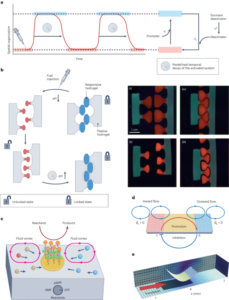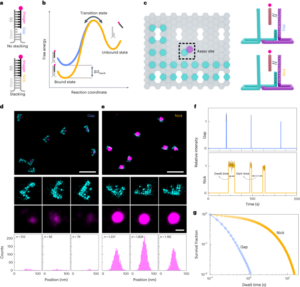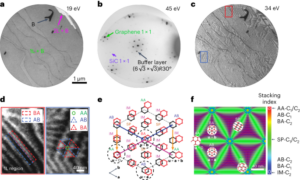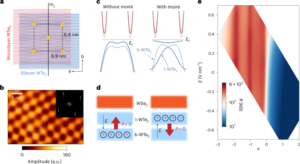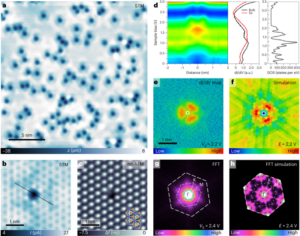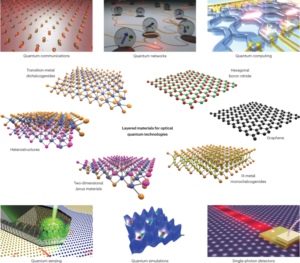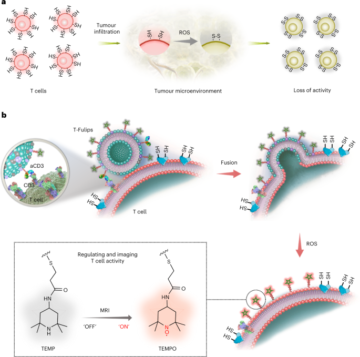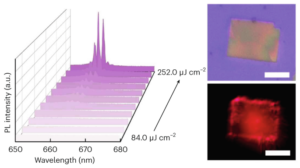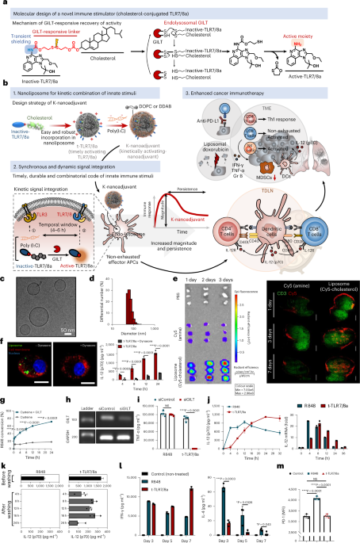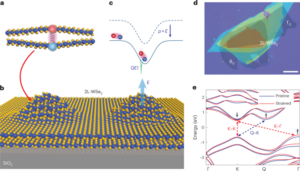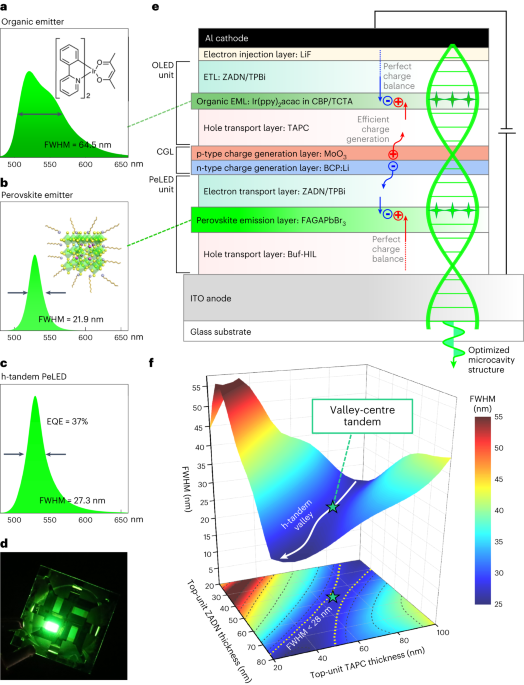
Cho, H. et al. Overcoming the electroluminescence efficiency limitations of perovskite light-emitting diodes. Science 350, 1222–1225 (2015).
Kim, Y.-H. et al. Multicolored organic/inorganic hybrid perovskite light-emitting diodes. Adv. Mater. 27, 1248–1254 (2015).
Protesescu, L. et al. Nanocrystals of cesium lead halide perovskites (CsPbX3, X = Cl, Br, and I): novel optoelectronic materials showing bright emission with wide color gamut. Nano Lett. 15, 3692–3696 (2015).
Kim, Y.-H., Cho, H. & Lee, T.-W. Metal halide perovskite light emitters. Proc. Natl Acad. Sci. USA 113, 11694–11702 (2016).
Quan, L. N. et al. Perovskites for next-generation optical sources. Chem. Rev. 119, 7444–7477 (2019).
Kim, Y.-H. et al. Comprehensive defect suppression in perovskite nanocrystals for high-efficiency light-emitting diodes. Nat. Photon. 15, 148–155 (2021).
Ma, D. et al. Distribution control enables efficient reduced-dimensional perovskite LEDs. Nature 599, 594–598 (2021).
Kim, J. S. et al. Ultra-bright, efficient and stable perovskite light-emitting diodes. Nature 611, 688–694 (2022).
Woo, S.-J., Kim, J. S. & Lee, T.-W. Characterization of stability and challenges to improve lifetime in perovskite LEDs. Nat. Photon. 15, 630–634 (2021).
Fan, X. C. et al. Ultrapure green organic light-emitting diodes based on highly distorted fused π-conjugated molecular design. Nat. Photon. 17, 280–285 (2023).
Chen, Y. et al. Approaching nearly 40% external quantum efficiency in organic light emitting diodes utilizing a green thermally activated delayed fluorescence emitter with an extended linear donor–acceptor–donor structure. Adv. Mater. 33, 2103293 (2021).
Han, T.-H. et al. Approaching ultimate flexible organic light-emitting diodes using a graphene anode. NPG Asia Mater. 8, e303 (2016).
Chang, Y. W. et al. A versatile ferrocene-containing material as a p-type charge generation layer for high-performance full color tandem OLEDs. Chem. Commun. 52, 14294–14297 (2016).
Cho, T. Y., Lin, C. L. & Wu, C. C. Microcavity two-unit tandem organic light-emitting devices having a high efficiency. Appl. Phys. Lett. 88, 111106 (2006).
Wang, L. et al. Design of high-performance tandem blue devices for quantum-dot OLED display. SID Symp. Dig. Tech. Pap. 51, 929–932 (2020).
Mizusaki, M. et al. Single and tandem OLED display technologies with high efficiency and long lifetime. SID Symp. Dig. Tech. Pap. 52, 278–281 (2021).
Chan, C. Y. et al. Stable pure-blue hyperfluorescence organic light-emitting diodes with high-efficiency and narrow emission. Nat. Photon. 15, 203–207 (2021).
Forrest, S. R., Bradley, D. D. C. & Thompson, M. E. Measuring the efficiency of organic light-emitting devices. Adv. Mater. 15, 1043–1048 (2003).
Sun, Y. et al. Improved performance of red phosphorescent organic light emitting diodes using partial mixed host system. J. Nanosci. Nanotechnol. 15, 8081–8085 (2015).
Kim, J. M., Lee, C. H. & Kim, J.-J. Mobility balance in the light-emitting layer governs the polaron accumulation and operational stability of organic light-emitting diodes. Appl. Phys. Lett. 111, 203301 (2017).
Kröger, M. et al. Temperature-independent field-induced charge separation at doped organic/organic interfaces: experimental modeling of electrical properties. Phys. Rev. B 75, 235321 (2007).
Lee, T.-W., Chung, Y., Kwon, O. & Park, J. J. Self-organized gradient hole injection to improve the performance of polymer electroluminescent devices. Adv. Funct. Mater. 17, 390–396 (2007).
Han, T.-H. et al. Extremely efficient flexible organic light-emitting diodes with modified graphene anode. Nat. Photon. 6, 105–110 (2012).
Jeong, S.-H. et al. Characterizing the efficiency of perovskite solar cells and light-emitting diodes. Joule 4, 1206–1235 (2020).
Furno, M., Meerheim, R., Hofmann, S., Lüssem, B. & Leo, K. Efficiency and rate of spontaneous emission in organic electroluminescent devices. Phys. Rev. B 85, 115205 (2012).
Moon, C.-K., Kim, S.-Y., Lee, J.-H. & Kim, J.-J. Luminescence from oriented emitting dipoles in a birefringent medium. Opt. Express 23, A279–A291 (2015).
Kim, K. H. et al. Phosphorescent dye-based supramolecules for high-efficiency organic light-emitting diodes. Nat. Commun. 5, 4769 (2014).
Lee, J. et al. Synergetic electrode architecture for efficient graphene-based flexible organic light-emitting diodes. Nat. Commun. 7, 11791 (2016).
Cho, C. et al. The role of photon recycling in perovskite light-emitting diodes. Nat. Commun. 11, 611 (2020).
Zou, Y. et al. High-performance narrowband pure-red OLEDs with external quantum efficiencies up to 36.1% and ultralow efficiency roll-off. Adv. Mater. 34, 2201442 (2022).
- SEO Powered Content & PR Distribution. Get Amplified Today.
- PlatoData.Network Vertical Generative Ai. Empower Yourself. Access Here.
- PlatoAiStream. Web3 Intelligence. Knowledge Amplified. Access Here.
- PlatoESG. Carbon, CleanTech, Energy, Environment, Solar, Waste Management. Access Here.
- PlatoHealth. Biotech and Clinical Trials Intelligence. Access Here.
- Source: https://www.nature.com/articles/s41565-023-01581-2
- $UP
- 1
- 10
- 11
- 12
- 13
- 14
- 15%
- 16
- 17
- 19
- 20
- 2006
- 2011
- 2012
- 2014
- 2015
- 2016
- 2017
- 2019
- 2020
- 2021
- 2022
- 2023
- 22
- 23
- 24
- 25
- 26
- 27
- 28
- 29
- 30
- 32
- 36
- 7
- 75
- 8
- 9
- a
- accumulation
- activated
- AL
- an
- and
- approaching
- architecture
- article
- AS
- asia
- At
- b
- Balance
- based
- Blue
- Bright
- Cells
- challenges
- charge
- click
- color
- comprehensive
- control
- Delayed
- Design
- Devices
- DIG
- Display
- distribution
- e
- E&T
- efficiencies
- efficiency
- efficient
- emission
- enables
- Ether (ETH)
- experimental
- extended
- external
- extremely
- flexible
- For
- from
- full
- generation
- governs
- Graphene
- Green
- having
- High
- high-performance
- highly
- Hole
- host
- http
- HTTPS
- Hybrid
- i
- improve
- improved
- in
- interfaces
- Kim
- Kwon
- layer
- lead
- Lee
- LEO
- lifetime
- light
- limitations
- lin
- LINK
- Long
- material
- materials
- measuring
- medium
- metal
- mixed
- mobility
- modeling
- modified
- molecular
- nanotechnology
- Nature
- nearly
- next-generation
- novel
- of
- Oled
- on
- operational
- organic
- overcoming
- Park
- performance
- plato
- Plato Data Intelligence
- PlatoData
- polymer
- properties
- Quantum
- R
- Rate
- recycling
- Red
- reference
- Role
- s
- Scholar
- SCI
- showing
- single
- solar
- Solar cells
- Sources
- Stability
- stable
- structure
- suppression
- system
- T
- Tandem
- tech
- Technologies
- The
- thompson
- to
- ultimate
- using
- Utilizing
- versatile
- W
- wide
- with
- wu
- X
- zephyrnet

